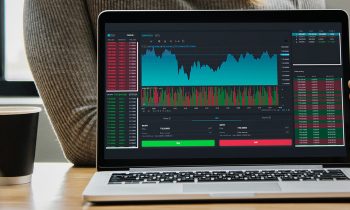How much does it cost to run an exchange?
When exploring the possibility of entering the cryptocurrency exchange market, most people begin by enquiring…
Read more
With a seemingly endless selection of cryptocurrency exchanges in operation today, it can sometimes be overwhelming for traders to decide on which exchange they should do business with. For example, which features should crypto traders look out for on one platform versus the others?
As an exchange operator, the success of your venture depends largely on how well you differentiate your digital asset exchange versus your competitors. In this article, we explore 5 ways in which cryptocurrency exchanges can effectively compete in the marketplace.
Liquidity refers to a market’s ability to be traded quickly and easily. For example, in a highly liquid market, a trader can buy or sell a large volume of cryptocurrency immediately, whereas in an illiquid market, it’s possible a trader would not be able to have their order filled in a timely manner.
Therefore, it’s clear that traders are more likely to gravitate towards crypto exchanges with high liquidity. In addition to making it faster and easier for investors to trade large quantities of digital assets, liquid markets also offer the advantages of low spreads (that is, the difference between the bid and ask price).
Traders can review an exchange’s order book to get an idea of how much liquidity is available on a platform—if the book is filled with orders, it follows that the market is liquid.
In any business, scarcity of supply combined with strong demand can yield an incredible competitive advantage. If an exchange features an in-demand digital asset which can only be traded on its platform, it goes without saying that this exclusivity could help to boost the exchange’s market share.
In the cryptocurrency industry, such exclusive instruments typically take the form of local currency-based pairs, incentivizing local users to register for a platform. Exchange operators can enhance their user experience by developing good working relationships with local banks and payment processors. Furthermore, exchanges can offer exotic instruments such as swaps and futures if they want to stand out and add exclusivity to their value proposition.
Given the relatively nascent state of cryptocurrencies and lack of mass adoption beyond the fintech realm, a user-friendly and visually appealing UI can go a long way towards gaining market share. The reality is: many people still don’t understand what cryptocurrencies are, let alone how to register for an exchange and trade digital assets. Therefore, offering a simple UI increases an exchange’s likelihood of acquiring a larger number of users.
A great example of a well-executed UI among popular cryptocurrency exchanges is Coinbase. This platform did an excellent job at advertising a user-friendly, straightforward UI featuring a few buttons to quickly and easily buy and sell crypto. On the backend, the company strategically executed those trades on its professional platform, CoinbasePro—making their exchange more attractive to beginner users while simultaneously increasing liquidity on their main exchange.
To position a cryptocurrency exchange for long-term success, operators should make their platforms market maker-friendly. This means offering a valuable API and rebates or commission discounts based on trading volumes.
Moreover, you can further appeal to market makers and liquidity providers by including special features such as “post only orders” or “cancel on disconnect” functionalities. Ultimately, encouraging market makers onto your platform enhances liquidity, tightens spreads, and provides more value to traders.
For professional traders, small customization features in trading execution can be a make-or-break in their decision of which cryptocurrency exchange to do business with.
One such example of a trading customization is the price increment of a given digital asset. For instance, consider two crypto exchanges which both offer the BTC/USD pair but one has a price increment of $0.01 whereas the other has a price increment of $10.
In general, a larger price increment necessarily leads to a wider spread. Additionally, it results in prices clustering at certain price levels more so than with small price increments, in which orders are spread out over multiple price levels.
Therefore, if advanced traders implement a basic market making strategy of buying at best bid and selling at best ask, they would make a $10 profit from every Bitcoin traded on exchange #2 (using our example above) versus a mere $0.01 profit per Bitcoin on exchange #1. In other words, in the aforementioned hypothetical example, exchange #2 with the larger price increment would yield a 1,000x better profit than exchange #1, assuming all other factors remained equal. Price increment is just one of many potential customization features that experienced traders would desire on one cryptocurrency exchange versus another.

When exploring the possibility of entering the cryptocurrency exchange market, most people begin by enquiring…
Read more
There are dozens of popular programming languages and platforms. Each with its own set of…
Read more
How To Migrate Between Cryptocurrency Exchanges Are you looking to switch from one cryptocurrency exchange…
Read more